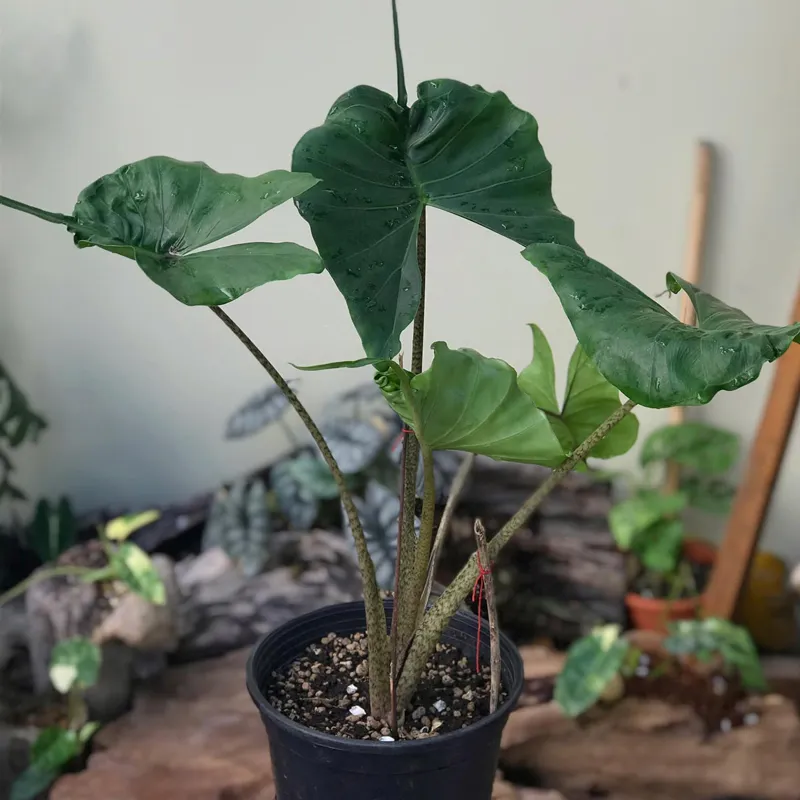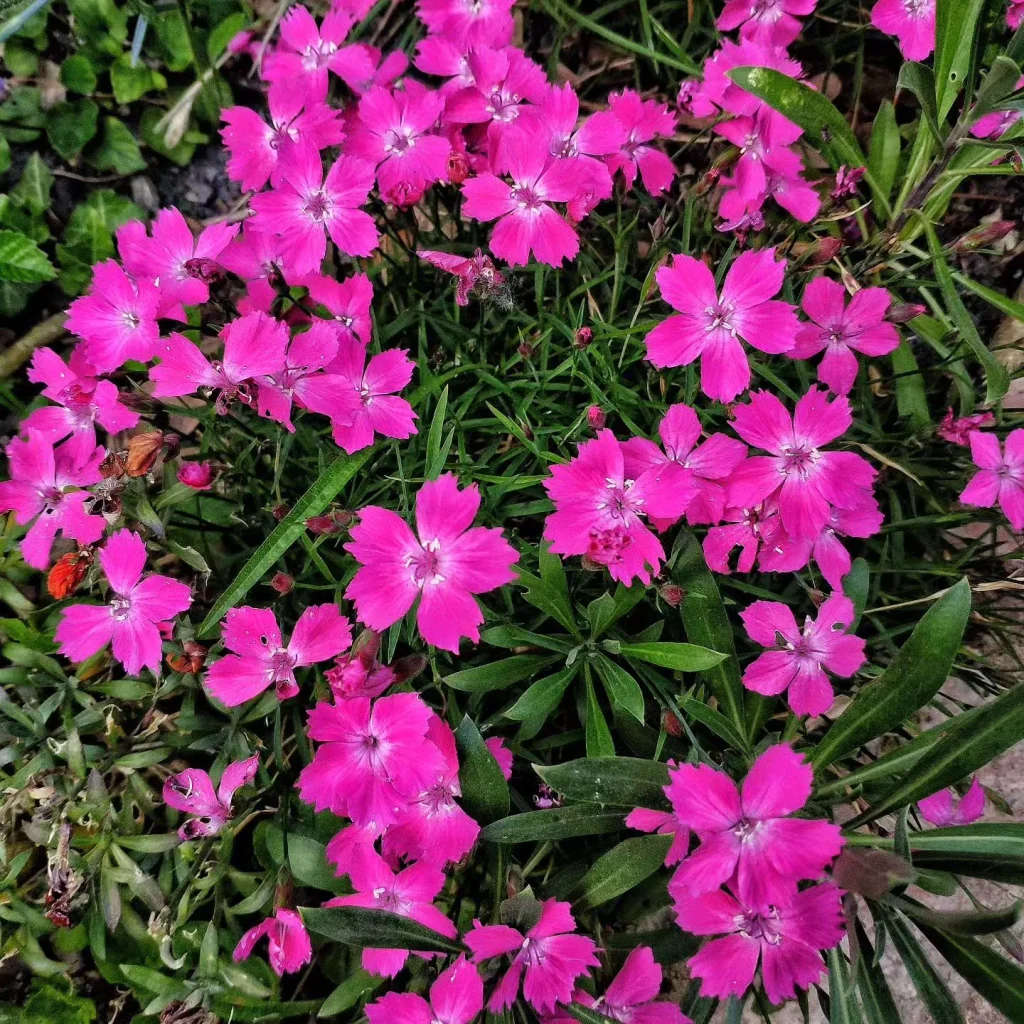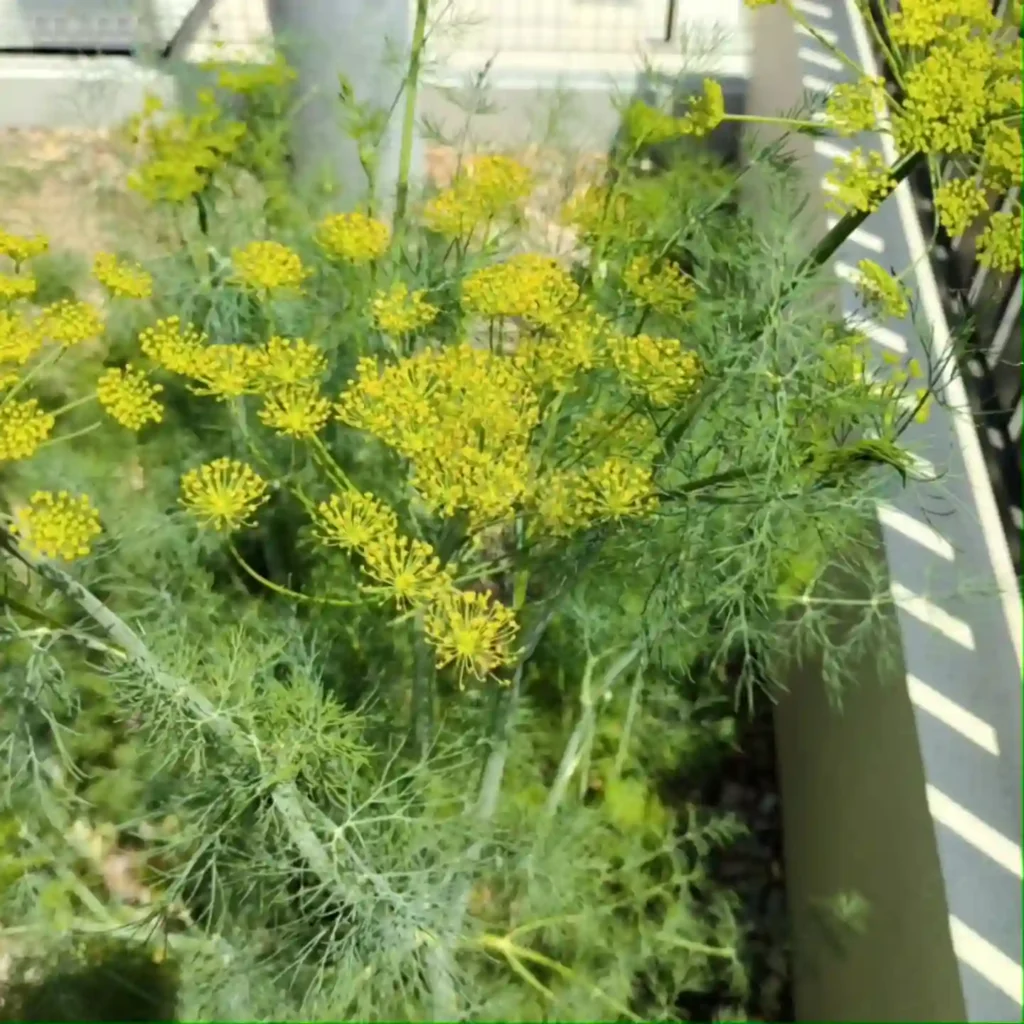My Fascination with Mouse-Ear Chickweed (Cerastium)
As a lifelong admirer of the natural world, I, Ferb Vu, find myself drawn to the unassuming beauty of even the most common plants. One genus that has particularly captured my attention is Cerastium, more affectionately known as mouse-ear chickweed. These delicate plants, with their small, white flowers and soft, hairy leaves, often go unnoticed, blending into the background of meadows and gardens. But upon closer inspection, their intricate details and resilience reveal a captivating charm.
Understanding the Cerastium Genus
Cerastium belongs to the Caryophyllaceae family, which also includes carnations and pinks. The genus boasts a diverse range of over 200 species, distributed across the globe, though they are most prevalent in the northern temperate regions. Their common name, “mouse-ear chickweed,” stems from the shape and texture of their leaves, which are often covered in fine hairs, resembling the ears of a mouse.
These plants are typically low-growing, forming mats or clumps of foliage. Their flowers, usually white but occasionally yellow, are small and delicate, with five petals that are often deeply notched, giving them a ten-petaled appearance. The flowers bloom from spring to summer, attracting pollinators like bees and butterflies.
Notable Cerastium Species
While the genus encompasses a vast number of species, some stand out due to their unique characteristics or widespread distribution. Here are:
- Cerastium afromontanum T.C.E.Fr.
- Cerastium akiyoshiense Kadota
- Cerastium aleuticum Hultén
- Cerastium alexeenkoanum Schischk.
- Cerastium alpinum L.
- Cerastium alsinifolium Tausch
- Cerastium alvandicum Poursakhi, Assadi & F.Ghahrem.
- Cerastium amanum P.H.Davis
- Cerastium andinum Benth.
- Cerastium apuanum Parl.
- Cerastium arabidis E.Mey. ex Fenzl
- Cerastium araraticum Rupr.
- Cerastium arcticum Lange
- Cerastium argenteum M.Bieb.
- Cerastium argentinum (Pax) F.N.Williams
- Cerastium armeniacum Gren.
- Cerastium arvense L.
- Cerastium assadii Poursakhi & F.Ghahrem.
- Cerastium atlanticum Durieu
- Cerastium axillare Correll
- Cerastium azerbaijanicum Poursakhi, Assadi & F.Ghahrem.
- Cerastium azoricum Hochst. ex Seub.
- Cerastium baischanense Y.C.Chu
- Cerastium banaticum (Rochel) Heuff.
- Cerastium barberi B.L.Rob.
- Cerastium bazofticum Poursakhi, Assadi & F.Ghahrem.
- Cerastium beeringianum Cham. & Schltdl.
- Cerastium behmianum Muschl.
- Cerastium bialynickii Tolm.
- Cerastium biebersteinii DC.
- Cerastium × blyttii Baenitz
- Cerastium boissierianum Greuter & Burdet
- Cerastium borisii Zakirov
- Cerastium brachypetalum Desp. ex Pers.
- Cerastium brachypodum (Engelm. ex A.Gray) B.L.Rob. ex Britton
- Cerastium brevicarpicum Rusby
- Cerastium × brueggerianum Dalla Torre & Sarnth.
- Cerastium bulgaricum Uechtr.
- Cerastium cacananense Möschl
- Cerastium candicans Wedd.
- Cerastium candidissimum Correns
- Cerastium capense Sond.
- Cerastium capillatum I.V.Sokolova
- Cerastium carinthiacum Vest
- Cerastium caucasicum Fisch. ex Ser.
- Cerastium chlorifolium Fisch. & C.A.Mey.
- Cerastium comatum Desv.
- Cerastium commersonianum Ser.
- Cerastium consanguineum Wedd.
- Cerastium crassipes Bartl.
- Cerastium crassiusculum Klokov
- Cerastium cuatrecasasii Sklenář
- Cerastium cuchumatanense D.A.Good
- Cerastium cylindricum Poursakhi & Assadi
- Cerastium dagestanicum Schischk.
- Cerastium danguyi J.F.Macbr.
- Cerastium davuricum Fisch. ex Spreng.
- Cerastium decalvans Schloss. & Vuk.
- Cerastium deschatresii Greuter, N.Böhling & Ralf Jahn
- Cerastium dichotomum L.
- Cerastium dicrotrichum Fenzl ex Rohrb.
- Cerastium diffusum Pers.
- Cerastium dinaricum Beck & Szyszył.
- Cerastium dominici Favarger
- Cerastium elbrusense Boiss.
- Cerastium elongatum Pursh
- Cerastium emesenum Mouterde
- Cerastium eriophorum Kit. ex Schult.
- Cerastium falcatum (Gren.) Bunge ex Fenzl
- Cerastium fastigiatum Greene
- Cerastium filifolium Vest
- Cerastium fischerianum Ser.
- Cerastium floccosum Benth.
- Cerastium fontanum Baumg. – Plant FAQs: Cerastium Fontanum
- Cerastium fragillimum Boiss.
- Cerastium furcatum Cham. & Schltdl.
- Cerastium gibraltaricum Boiss.
- Cerastium glabratum (Wahlenb.) Hartm.
- Cerastium glomeratum Thuill. – Plant FAQs: Cerastium Glomeratum
- Cerastium gnaphalodes Fenzl
- Cerastium gracile Dufour
- Cerastium grandiflorum Waldst. & Kit.
- Cerastium guatemalense Standl.
- Cerastium haussknechtii Boiss. & Hausskn.
- Cerastium hekuravense Jáv.
- Cerastium hemschinicum Schischk.
- Cerastium hintoniorum B.L.Turner
- Cerastium holosteoides Fr.
- Cerastium huadingense Y.F.Lu, W.Y.Xie & X.F.Jin
- Cerastium humifusum Cambess.
- Cerastium ibukiense (Ohwi) Kadota
- Cerastium igoschinae Pobed.
- Cerastium illyricum Ard.
- Cerastium imbricatum Kunth
- Cerastium inflatum Gren.
- Cerastium jiuhuashanense Gang Yao & J.W.Zhai
- Cerastium julicum Schellm.
- Cerastium junceum Möschl
- Cerastium juniperorum Standl. & Steyerm.
- Cerastium kasbek Parrot
- Cerastium krylovii Schischk. & Gorczak.
- Cerastium kunthii Briq.
- Cerastium lacaitae Barberis, Bechi & Miceli
- Cerastium × laestadianum H.Samzelius
- Cerastium lanceolatum (Poir.) Volponi
- Cerastium latifolium L.
- Cerastium lazicum Boiss.
- Cerastium ligusticum Viv.
- Cerastium limprichtii Pax & K.Hoffm.
- Cerastium lineare All.
- Cerastium lithospermifolium Fisch.
- Cerastium longifolium Willd.
- Cerastium macranthum Boiss.
- Cerastium macrocalyx Buschm.
- Cerastium madagascariense Pax
- Cerastium madrense S.Watson
- Cerastium malyi (T.Georgiev) Niketić
- Cerastium maximum L.
- Cerastium meridense Linden & Planch.
- Cerastium meyerianum Rupr.
- Cerastium microspermum C.A.Mey.
- Cerastium moesiacum Friv.
- Cerastium mollissimum Poir.
- Cerastium montioides Naudin
- Cerastium morrisonense Hayata
- Cerastium mucronatum Wedd.
- Cerastium multiflorum C.A.Mey.
- Cerastium nanhutashanense S.S.Ying
- Cerastium nanum Muschl.
- Cerastium nemorale M.Bieb.
- Cerastium neoscardicum Niketić
- Cerastium nigrescens (Edmondston ex H.C.Watson) H.C.Watson
- Cerastium novoguinense Gilli
- Cerastium nutans Raf.
- Cerastium octandrum Hochst. ex A.Rich.
- Cerastium odessanum Klokov
- Cerastium oreades Schischk.
- Cerastium orithales Schltdl.
- Cerastium × oxoniense Druce
- Cerastium papuanum Schltr. ex Mattf.
- Cerastium parvipetalum Hosok.
- Cerastium parvum (Pedersen) M.T.Sharples & E.A.Tripp
- Cerastium pauciflorum Steven ex Ser.
- Cerastium pedunculare Bory & Chaub.
- Cerastium pedunculatum Gaudin
- Cerastium perfoliatum L.
- Cerastium peruvianum Muschl.
- Cerastium pisidicum Ayasligil & Kit Tan
- Cerastium polymorphum Rupr.
- Cerastium ponticum Albov
- Cerastium porphyrii Schischk.
- Cerastium pospichalii Soldano & F.Conti
- Cerastium × pseudalpinum Murr
- Cerastium pumilum Curtis
- Cerastium purpurascens Adams
- Cerastium purpusii Greenm.
- Cerastium pusillum Ser.
- Cerastium pyrenaicum J.Gay
- Cerastium qingliangfengicum H.W.Zhang & X.F.Jin
- Cerastium ramigerum Bartl.
- Cerastium ramosissimum Boiss.
- Cerastium rectum Friv.
- Cerastium regelii Ostenf.
- Cerastium × richardsonii Druce
- Cerastium rivulare Cambess.
- Cerastium rivulariastrum Möschl & Pedersen
- Cerastium ruderale M.Bieb.
- Cerastium runemarkii Möschl & Rech.f.
- Cerastium saccardoanum Diratz.
- Cerastium scaposum Boiss. & Heldr.
- Cerastium scaranii Ten.
- Cerastium schizopetalum Maxim.
- Cerastium schmalhausenii Pacz.
- Cerastium selloi Schltdl. ex Rohrb.
- Cerastium semidecandrum L.
- Cerastium siculum Guss.
- Cerastium sinaloense D.A.Good
- Cerastium sinicum Nakai
- Cerastium smolikanum Hartvig
- Cerastium soleirolii Ser. ex Duby
- Cerastium soratense Rohrb.
- Cerastium sosnowskyi Schischk.
- Cerastium spathulatum Pers.
- Cerastium subciliatum Gartner
- Cerastium subpilosum Hayata
- Cerastium subspicatum Wedd.
- Cerastium subtetrandrum (Lange) Murb.
- Cerastium subtriflorum (Rchb.) Pancher
- Cerastium sugawarae Koidz. & Ohwi
- Cerastium supramontanum Arrigoni
- Cerastium sventenii Jalas
- Cerastium sylvaticum Waldst. & Kit.
- Cerastium × symei Druce
- Cerastium szechuense F.N.Williams
- Cerastium szowitsii Boiss.
- Cerastium takasagomontanum Masam.
- Cerastium taschkendicum Adylov & Vved.
- Cerastium tatrae Borbás
- Cerastium terrae-novae Fernald & Wiegand
- Cerastium texanum Britton
- Cerastium theophrasti Merxm. & Strid
- Cerastium thomasii Ten.
- Cerastium thomsonii Hook.f.
- Cerastium tianschanicum Schischk.
- Cerastium tolucense D.A.Good
- Cerastium tomentosum L. – Plant FAQs: Cerastium Tomentosum – Snow-in-Summer
- Cerastium transsilvanicum Schur
- Cerastium trianae Briq.
- Cerastium trichocalyx Muschl.
- Cerastium × triculinum A.Nyár. & Prodan
- Cerastium undulatifolium Sommier & Levier
- Cerastium uniflorum Clairv.
- Cerastium utriense Barberis
- Cerastium vagans Lowe
- Cerastium velutinum Raf.
- Cerastium venezuelanum Briq.
- Cerastium verecundum Ravenna
- Cerastium verticifolium R.L.Dang & X.M.Pi
- Cerastium viride A.Heller
- Cerastium viscatum (Montel.) Jalas
- Cerastium vourinense Möschl & Rech.f.
- Cerastium vulcanicum Schltdl.
- Cerastium wilhelmianum Sklenář
- Cerastium wilsonii Takeda
- Cerastium zhiguliense Saksonov
The Appeal of Cerastium
My fascination with Cerastium stems from several factors. Firstly, their understated beauty challenges the notion that only large, showy flowers are worthy of admiration. The delicate details of their flowers and the soft texture of their leaves offer a subtle charm that rewards close observation.
Secondly, their resilience and adaptability impress me. These plants can thrive in diverse environments, from alpine meadows to urban gardens. They tolerate a range of soil conditions and can even withstand drought. This hardiness speaks to their ability to persist in the face of challenges, a quality I find admirable.
Finally, their ecological role intrigues me. While often considered weeds, Cerastium species play a vital role in their ecosystems. They provide food and shelter for insects, contribute to soil health, and even offer erosion control. Recognizing their ecological value encourages a deeper appreciation for their presence.
Observing and Learning
I find immense satisfaction in observing Cerastium in its natural habitat. Whether I’m exploring a mountain trail or simply strolling through a local park, I always keep an eye out for these unassuming plants. Examining their growth patterns, noticing the subtle variations between species, and witnessing their interactions with other organisms provides a constant source of learning and wonder.
In my own garden, I’ve even embraced the presence of Cerastium fontanum, allowing it to grow in certain areas. While some may consider it a nuisance, I view it as an opportunity to observe its life cycle and appreciate its tenacity.
A Call to Appreciation
In a world that often prioritizes the flashy and the dramatic, I believe there’s value in appreciating the subtle beauty and resilience of plants like Cerastium. By taking the time to observe and understand these often-overlooked members of the plant kingdom, we can gain a deeper appreciation for the intricate interconnectedness of the natural world and the vital role that even the smallest organisms play.
I encourage everyone to take a closer look at the Cerastium growing in their surroundings. You might be surprised by the beauty and complexity you discover in these unassuming plants.
If i die, water my plants!



